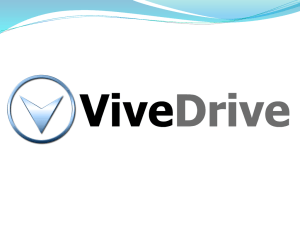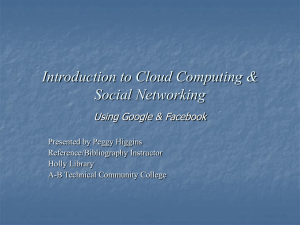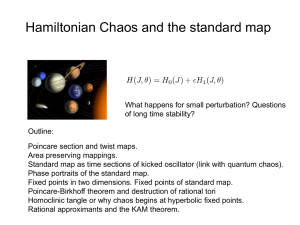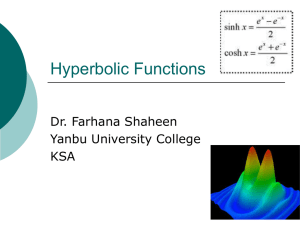Slides
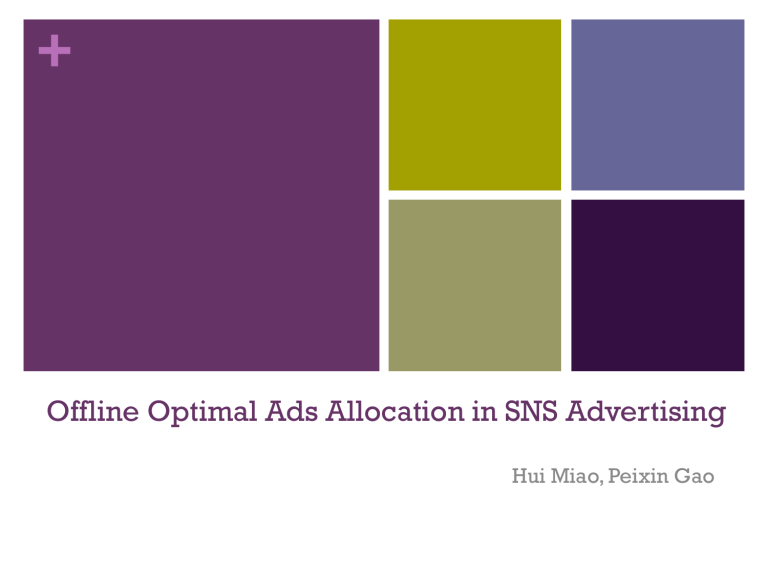
+
Offline Optimal Ads Allocation in SNS Advertising
Hui Miao, Peixin Gao
+
Social Network Advertising
& Ads Allocation Problem
+
Popularity of SNS
Figure created by Rowan Casey: https://plus.google.com/110172400710124550294
+
Popularity of SNS
U.S. Users Spend More time on Facebook than any other web brands
Source: Nielsen Social Media Report 2011, http://cn.nielsen.com/documents/Nielsen-Social-Media-Report_FINAL_090911.pdf
+
Popularity of SNS
Facebook usages
500 million active users
100 billion hits per day
50 billion photos
2 trillion objects cached, with hundreds of millions of requests per second
130TB of logs every day
Source: Scaling Facebook to 500 Million Users and Beyond, https://www.facebook.com/note.php?note_id=409881258919
+
Monetizing Social Networks
Maintaining the operating expenses is definitely not easy.
Facebook introduced Ads in the end of 2007, Twitter in the mid of 2010
Real people profile & activity, Social graph diffusions, Viral marketing .. make it a new way than search engine Ads
Now Ads are the major source of income of SNS sites:
Facebook 14’ 1Q Financial Report:
Revenue: 2.50 billion (2.27 billion from Ads, 90.8%)
Twitter 14’ 1Q Financial Report:
Revenue: 250 million (226 million from Ads, 90.4%)
+
Facebook Social Ads TM 101
Identify Ad Objective
Page in FB
Event
Landing an external website
Figures, Source: https://www.facebook.com/help
Promote an App
+
Facebook Social Ads TM 101
Facebook provides these types of Ads placement
Figures, Source: https://www.facebook.com/help
+
It looks like this in current
Diffusion by
Engagement
A new user impression (hit, refresh) pops different ads
+
Facebook Social Ads TM 101
Setup an Ad on Facebook
Objective
+
Facebook Social Ads TM 101
Setup an Ad on Facebook
Audience
Note: pay for the diffusion ones it makes it different from influential maximization problem
+
Facebook Social Ads TM 101
Setup an Ad on Facebook
Campaign max bid one would like to pay
CPM makes more sense within
Facebook and is the default one when one promotes Page, App or Event
+
Facebook Social Ads TM 101
Source: https://www.facebook.com/help/www/318171828273417/
+
Summary & the Allocation Problem
A user’s impression is allocated to a set of Ads
Relevant Ads, or Sponsored stories, Friends’ engagement
Right column refreshes, News feeds column has lasting effect
Advertiser
Bid on a target user group by using categorical filters
(compare with bid a kwd in Adwords), each user has social influence
Pay for the actions due to diffusion. (in CPM, pays for all impressions), i.e. paid social influence.
Agent
Allocate Ads to their target user groups’ daily impressions
Respect the budget
We study the Maximum Revenue Allocation Problem in SNS
Ads
+
Formulation
Let A be the set of advertisers, and U be the set of users. Each user has daily impression I u
Each advertiser A i and social influence function P(u). has a budget B i and bidding price p all advertiser’s targeting preference is a (0,1) matrix T i
, and
To maximize the revenue is to find the optimal allocation I: budget impression targeting
And the influence function
+
Hyperbolic Embedding for
Complex Networks
+
Hyperbolic Geometry
A Non-Euclidean geometry
Often used in understanding physical time and space.
E.g. the light cone
Has its own distance metric lines
We use the Poincaré hyperbolic disc:
Commonly used hyperbolic two-space model
Hyperbolic Distance: d(x,y) triangles
Interesting things to know, e.g.
having no Parallel Postulate
For any infinite straight line L and any point P not on it, there are many other infinitely extending straight lines that pass through P and which do not intersect L. the sum of angles of a triangle is less than 180
Figure source: http://en.wikipedia.org/wiki/Light_cone , http://mathworld.wolfram.com/PoincareHyperbolicDisk.html
+
Hyperbolic Embedding
Krioukov et. al proposed a random graph generation method based on hyperbolic geometry.
Krioukov, D., Papadopoulos, F., Kitsak, M., Vahdat, A., & Boguñá, M.
Hyperbolic geometry of complex networks. Physical Review E, 82(3),
It shows popularity (heterogeneous degree distributions) as well as strong clustering can described by negative curvature and distance metric of hyperbolic geometry.
Method 1.
Start from empty network
2.
t
At time T i
, add a new node i at (r i
, t i
), r = 2ln(i)/k, assign
3.
4.
5.
Shifting all j < i, r j
= b r powerlaw skewness).
i
+ (1-b) r i ,
(b is related to
Creation of edges for i, by examine the probability of connection (i,j). The probability is related to their hyperbolic distance.
Select a random disconnected pair (m,n) and connect with the hyperbolic distance based probability p(x_mn)
Figure source: Dmitri Krioukov: http://www.isr.umd.edu/events/index.php?mode=4&id=6403
+
Hyperbolic Embedding
Later they show an embedding algorithm to map real world complex network to the hyperbolic space.
Papadopoulos, F.; Psomas, C.; Krioukov, D., "Network Mapping by Replaying
Hyperbolic Growth,", IEEE/ACM Transactions on Networking , vol.PP, no.99,
Key idea is they want to get such a hyperbolic embedding that is most likely be produced by the synthetic graph generation algorithm.
Embedding Algorithm:
1.
Based on the random graph model, they use the real network to estimate the parameters (expected degree of each node) of the joint probability of all nodes by solving a MLE problem.
2.
Sort nodes by degree, mapping nodes to (r,t) according to the descending order. r
And fix pervious node to , r j
= b r i i
= 2ln(i)/k.
+ (1-b) r i
3.
Use the probability distribution to assign the angular coordinate.





